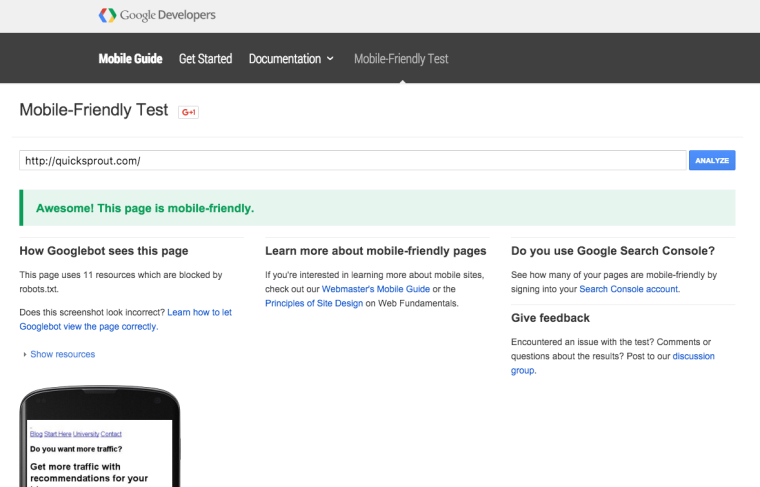

In the world of SEO, we have to be ready to pivot fast.
A single tweak to an algorithm can destroy everything we’ve built and force us to re-adapt quickly. These changes happen on an almost daily basis. It’s part of what makes the so field dynamic.
You might know this all too well; you might still be struggling with some leftover rank decline from past algorithms.
I’ve seen some websites that have yet to recover from the damage of early Panda rollouts. Is that the case for your site?
In this article, you’ll find a comprehensive strategy that should help you with current and future algorithm changes. I will carefully explain the last four big algorithm updates from Google and lay out a strategy for dealing with the damage.
I will limit myself to Google algorithm updates from 2015.
In each section, I will explain three things:
- What the Algorithm Means: What was the purpose of the algorithm? I’ll explain why Google decided to roll it out.
- What the Algorithm Did: What impact did it have? I’ll explain how the new algorithm affected websites.
- How to Repair the Damage: How do you recover from rank loss? I’ll explain how your site can regain lost rank and traffic.
If you have experienced ranking declines from any new algorithms, I encourage you to repair them as soon as possible.
1. RankBrain, 2015
What the Algorithm Means
RankBrain is the introduction of advanced machine learning into the search algorithm.
For a long time, the algorithm has used features of artificial intelligence, meaning that the algorithm learns things from users, trends, queries, and other sources of input.
Google representatives have explicitly stated this change in the algorithm is impacting or processing a “very large fraction” of the search volume it receives.
RankBrain itself is a learning system, but the things it learns are then fed back into the search algorithm, which makes it more intuitive and “smart,” so to speak.
RankBrain has been in the works for some time. Google engineers — some of whom hold advanced degrees in fields you’ve never heard of — implemented the algorithm months ago.
Now, RankBrain dictates the results of the search algorithm. In fact, if Google were to suddenly turn it off, it “would be as damaging to users as forgetting to serve half the pages on Wikipedia” according to Bloomberg.
It’s now the third most important ranking factor, affecting 15% of all queries. Fifteen percent is a huge number, considering that one of the biggest algorithm changes to date (Panda 4.0, May 2014) affected only 7.5% of English-language queries.
What the Algorithm Did
As massive and pervasive as RankBrain is, the SEO collateral damage has been pretty low.
Why? Because the algorithm got smarter. In spite of the name, RankBrain isn’t trying to regulate the ranking of existing websites as much as it is focused on interpreting user queries.
The only potential damage has been called “zombie traffic.” Barry Schwartzexplains zombie traffic:
[Zombie traffic is] weird types of users being referred to their web sites via Google. They are calling these users that Google is sending over Zombie users because the users act like Zombies. They are dwelling on the site, not converting, slowly moving from page to page, like Zombies would travel around time.
Search experts speculate that the zombie traffic is coming from the RankBrain learning process.
The biggest impact of the algorithm change is an upside for users. Users who input ambiguous or more natural human language queries can expect to get more relevant results.
How to Repair the Damage
You probably haven’t experienced any significant damage from RankBrain. Nevertheless, you should take steps to make sure that your website ranks well in RankBrain. You accomplish this by:
- Creating the best user experience possible.
- Answering users’ questions with the content you post.
- Not stressing over keywords. Channel that energy toward writing better content!
We don’t know what damage will occur (if any), but we do know that the Google engineer told Bloomberg, “It’s going to get weird.”
2. Panda 4.2, July 17, 2015
What the Algorithm Means
Panda updates are old news. In fact, Panda 4.1 is the 28th of the Panda updates, according to Moz.
Some of the repercussions of Panda 4.1 (although Search Engine Land calls it Panda 4.2) were still being felt as recently as October 2015, two months after it was implemented.
To be technically accurate, Panda updates are actually a “refresh.” The algorithm doesn’t change as much as it processes new information, learns from it, and makes adjustments.
In essence, the Panda algorithm is a quality factor. It is designed to lower the rank of sites with low quality or thin content, and upgrade the ranking of sites that have strong, authoritative, long form content.
What the Algorithm Did
Panda 4.1 affected around 3% of queries.
Sites that were not hit by previous Panda updates were downgraded. There is flip side to this, however.
If your site was penalized by a previous Panda, and then you made improvements, chances are your site probably got upgraded.

From Search Engine Land: “The vertical red line is the Panda release date, and the horizontal line shows my pre-Panda 4.2 Google organic traffic and how it returned to the same level after August 14.”
How to Repair the Damage
If you’re still in the Panda penalty box, here’s how to make improvements:
- Make your content longer. Short-form content doesn’t rank well.
- Create a strong page title that matches the content on the page.
- Solve a real problem with your content. Don’t just throw words on the page.
- Improve spelling and grammar.
- Remove or reduce the number of ads on the page.
- Check to make sure all links are working properly.
- Create a strong meta-description to encourage click-through.
I recommend before doing anything else, you focus on improving your top landing pages that get the most traffic.
3. The Quality Update, May 2015
What the Algorithm Means
Google’s Quality Update came as a surprise to most SEOs. Google modified their core algorithm to adjust “how it processes quality signals.”
In other words, Google was probably shifting some of the 200-or-so ranking factors that they use to rank websites.
What the Algorithm Did
Interestingly, much of the ranking fluctuation happened around content-heavy sites. Some downgraded ranking seemed to happen to “How To” articles like those on Answers.com, Hubpages, and WikiHow. Each of those sites was affected by the algorithmic update.
The update was similar to Panda in that it was content-focused. However, there were noticeable performance differences. There seemed to be a high degree of intuitiveness in the way that Google assessed the quality of the sites and pages that were affected.
How to Repair the Damage
Google is constantly trying to improve user quality, rather than reducing spammy content. The Quality Update is meant to increase the quality of searches by bringing long-form content to the forefront. If an article title suggests that it will explain how to do something, then Google wants to make sure that the article has authority, validity, and a thorough explanation; it wants to ensure that the article provides what it says it does.
If you are a content producer, ensure that all of your content is authoritative, comprehensive, and rigorous.
4. “Mobilegeddon,” April 21, 2015
What the Algorithm Means
Google explained their “mobile-friendly update” like this:
As we noted earlier this year, today’s the day we begin globally rolling out our mobile-friendly update. We’re boosting the ranking of mobile-friendly pages on mobile search results. Now searchers can more easily find high-quality and relevant results where text is readable without tapping or zooming, tap targets are spaced appropriately, and the page avoids unplayable content or horizontal scrolling.
It’s a “strong signal,” meaning that how a page performs in mobile is going to dramatically influence whether or not a mobile user performing organic queries will find it or not.
However, the limitations of the algorithm need to be noted, too.
- It only affects search on mobile devices.
- It applies to individual pages, not to entire sites.
What the Algorithm Did
As expected, the algorithm was a huge shift. However, the algorithmic doomsday prophesies (mobilegeddon, mobilepocalyse, motopocalypse, or mobopocalypse) were largely unwarranted.
The good thing about the mobile-friendly update is that webmasters had plenty of time to get ready. It was common knowledge that users prefer responsive sites. It was only a matter of time before the algorithm reflected this expectation.
How to Repair the Damage
If you don’t yet have a responsive or mobile-friendly site, it’s time to change. You can test the mobile performance of individual pages by using Google’s mobile-friendly test.

Conclusion
Algorithm updates can be brutal, devastating, and cumbersome. They can also be enriching, constructive, and profitable.
Generally, algorithms all have the same intent: to improve search results for users.
As long as we’re designing websites for users and creating great content and experiences, we should be okay. And if the algorithm does deal us a nasty blow, there’s always a way to recover.
[“source-searchenginejournal”]

